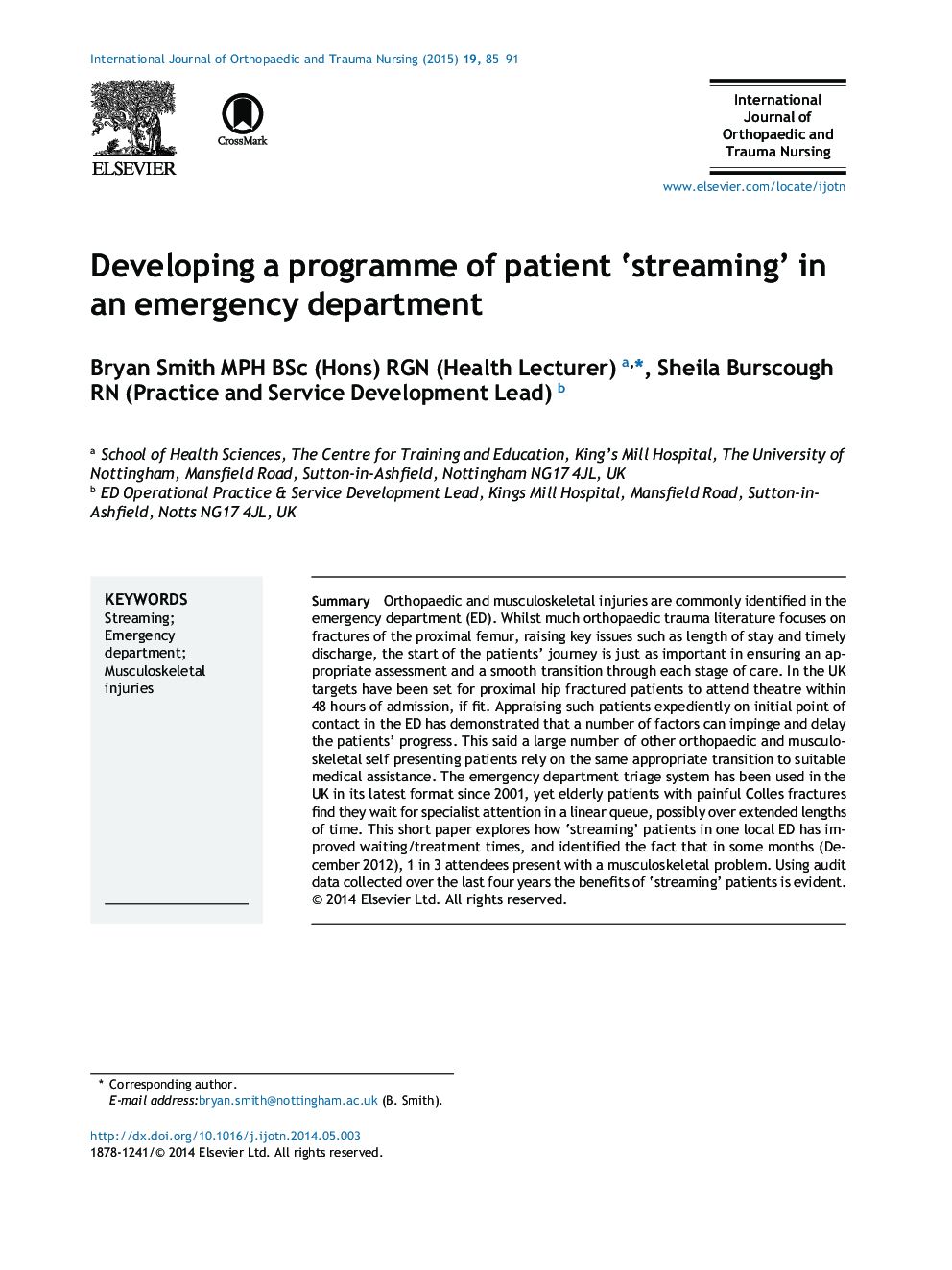| Article ID | Journal | Published Year | Pages | File Type |
|---|---|---|---|---|
| 2652712 | International Journal of Orthopaedic and Trauma Nursing | 2015 | 7 Pages |
SummaryOrthopaedic and musculoskeletal injuries are commonly identified in the emergency department (ED). Whilst much orthopaedic trauma literature focuses on fractures of the proximal femur, raising key issues such as length of stay and timely discharge, the start of the patients' journey is just as important in ensuring an appropriate assessment and a smooth transition through each stage of care. In the UK targets have been set for proximal hip fractured patients to attend theatre within 48 hours of admission, if fit. Appraising such patients expediently on initial point of contact in the ED has demonstrated that a number of factors can impinge and delay the patients' progress. This said a large number of other orthopaedic and musculoskeletal self presenting patients rely on the same appropriate transition to suitable medical assistance. The emergency department triage system has been used in the UK in its latest format since 2001, yet elderly patients with painful Colles fractures find they wait for specialist attention in a linear queue, possibly over extended lengths of time. This short paper explores how ‘streaming' patients in one local ED has improved waiting/treatment times, and identified the fact that in some months (December 2012), 1 in 3 attendees present with a musculoskeletal problem. Using audit data collected over the last four years the benefits of ‘streaming' patients is evident.
